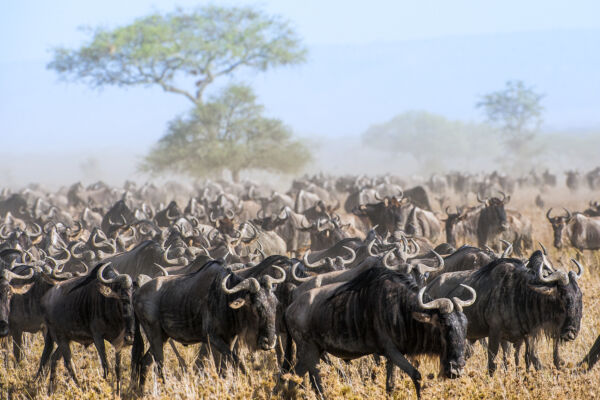A large-scale aerial survey conducted within the borders of South Sudan in Africa has revealed a spectacular natural phenomenon involving approximately 6 million antelopes migrating through the vast grasslands of Jonglei Province in the southeastern region of the country. This migration forms the largest land mammal migration spectacle in the world, known as the Great Nile Migration. However, the increasing prevalence of poaching activities in the area has cast a shadow over this magnificent event.
According to media reports, the survey results announced by South Sudan’s President Salva Kiir Mayardit on June 25 indicate that around 6 million antelopes engage in a long and perilous migration journey annually. Their migration route covers Boma National Park and Badingilo National Park in the east of the Nile River, extending to neighboring Ethiopia.
The Great Nile Migration is nearly three times the scale of the famous East African migration that takes place between Tanzania’s Serengeti Plain and Kenya’s Maasai Mara National Reserve, involving approximately 2 million animals such as zebras, gazelles, and wildebeests seeking water sources and grazing fields in a regular annual migration.
This survey was conducted by the South Sudanese Ministry of Wildlife Conservation and Tourism in collaboration with the non-profit organization African Parks to ensure the long-term sustainable development of the region.
The survey, conducted from April 28 to May 15, 2023, involved pilots and observers flying over an area of over 120,000 square kilometers, covering all known antelope activity ranges in the Boma-Badingilo-Jonglei area. They used two aircraft equipped with cameras, capturing a total of 330,000 photographs. These images were then analyzed by research students from the University of Juba using intelligent counting software, combined with data from 251 tracking collars on large mammals to determine the specific numbers of these migrating species.
Larry Mcgillewie, a pilot with the African Parks Foundation, estimated that approximately 6 million animals participate in the migration, including over 4 million white-eared kobs, as well as hundreds of thousands of tiang, Mongalla gazelles, and reedbucks.
Peter Fearnhead, CEO of the foundation, expressed astonishment at the survey results, emphasizing the significant responsibility to ensure the smooth migration and reproduction of these wild animals in the extremely complex natural environment.
President Mayardit of South Sudan stated, “It is well known that South Sudan is a country rich in biodiversity, home to some of the most beautiful animals in the world. Our grasslands and reserves provide a sanctuary for the largest population of antelopes on earth. As South Sudan continues to develop, we are committed to transforming the wildlife industry into a sustainable tourism sector. To achieve this goal, I urge the wildlife department and its partners to prioritize the training of wildlife rangers to combat poaching and illegal wildlife trafficking within the reserves.”
However, some analysts argue that South Sudan, plagued by years of conflict and with its population facing hardships exacerbated by consecutive crop failures due to flooding, more people are forced to resort to poaching to make ends meet. In addition, insufficient funding for animal conservation is also a major concern. Therefore, the wildlife conservation efforts and related tourism industry development in the country face significant challenges and a long road ahead.

